Audubon Prints
A Guide to the Watermarks and Paper Types Found in Audubon’s Havell edition of The Birds of America
A brief overview of the J. Whatman Turkey Mill papermaking enterprise in relation to Audubon’s Havell edition folio.
Recognizable for numerous reasons including its grand scale, Audubon’s Havell edition folio is all printed on the same double-elephant-size paper. Likewise, all the paper used for this edition of Birds of America comes from one of two branches of the J. Whatman papermaking firm. The Whatman enterprise itself was highly notable in the 18th -19th centuries for its contributions to the art of paper production. As innovators in their field, the Whatman firm was recognized for producing some of the finest quality drawing paper available at this time. This essay will consider the art of papermaking at the J. Whatman mill and its relation to Audubon’s Havell edition of Birds of America.
Before delving into the nuances of the material and its usage by Audubon, a brief history of the J. Whatman firm and of papermaking itself is necessary. Founded by James Whatman in the 18th century, the papermaking manufactory, called the Turkey Mill, was located in Kent and produced almost 10% of the nation’s paper output. Renowned globally for the quality and breadth of his paper products, Whatman’s enterprise was vital in contributing to the evolution of papermaking by introducing an innovative method for creating “wove” paper.
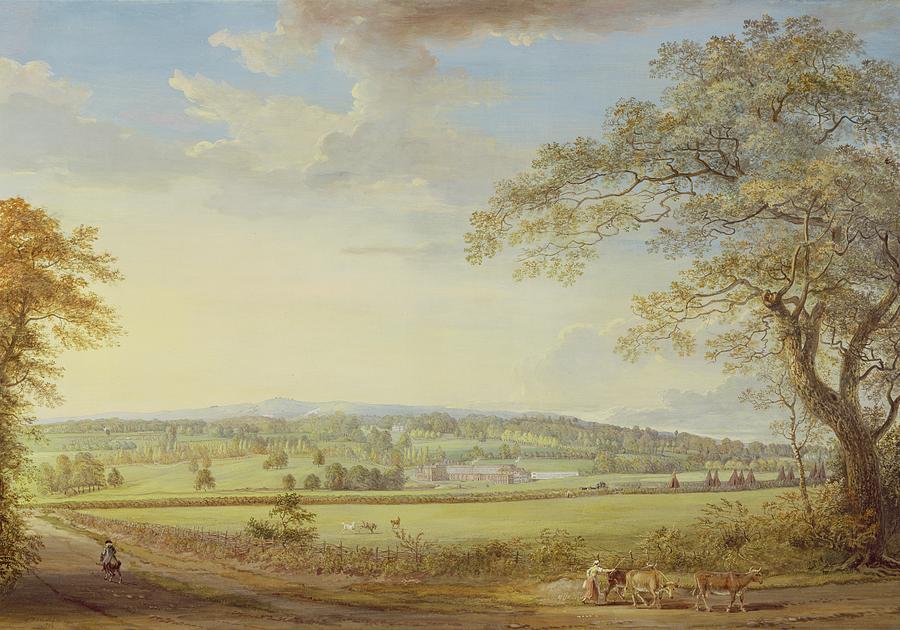
Paul Sandby’s A View of Vinters at Boxley, Kent, with Mr. Whatman’s Turkey Paper Mills
The painting was unironically painted on Whatman paper in 1794. Yale Center for British Art, Paul Mellon Fund.
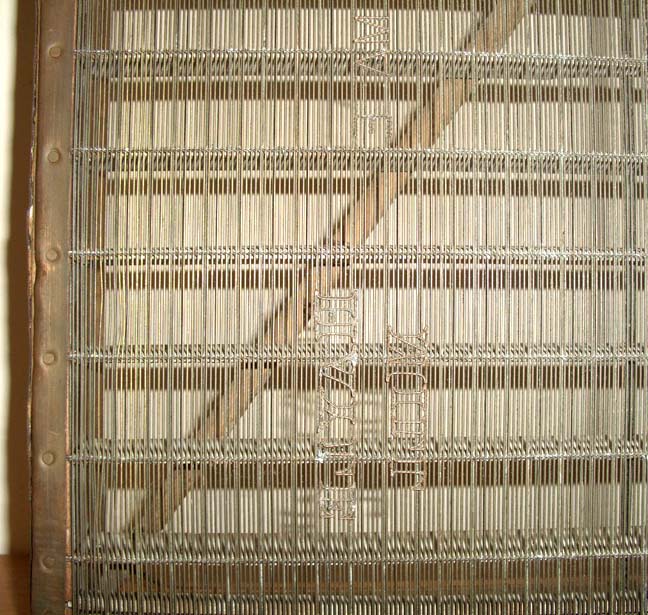
In order to understand wove paper, one must first look to its predecessor, “laid” paper, as a frame of reference. Laid paper was the standard material used by technical draftsmen, artists, surveyors, and engineers. The paper was produced through the use of a mold on which fibrous rag pulp was laid to dry. The mold, pictured to the left, was made up of a cross-hatched gridwork of wires that caught the fiber and impressed their subtle likeness into the surface of the paper. An example of laid paper can be seen below in Mark Catesby’s hand-colored engraving of the Cutwater.
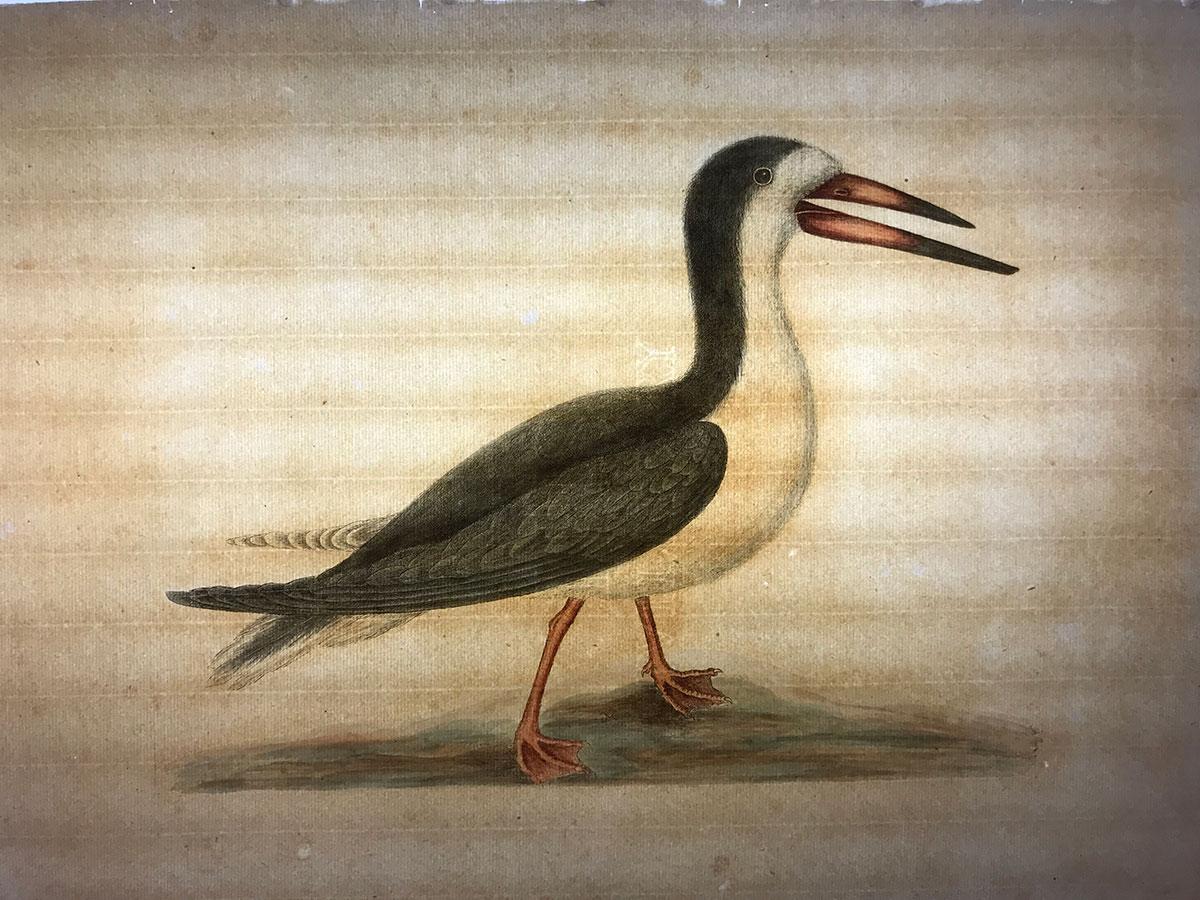
Catesby 1754, Vol. 1 Pl. 90, The Cutwater
Catesby often printed on laid paper as can be seen through the horizontal striations that are revealed when the print is backlit.
However, the topography of laid paper presented several problems for artists and draftsmen. To begin with, the paper surface had delicate furrows caused by the impression of the wire mold that made it difficult to work in delicate mediums such as ink, pen, and watercolor because the textural difference in the papers surface. Watercolor tended to pool in the furrows, and it was difficult to conduct a continuous line over the textured topography of the laid paper.
In order to resolve these material complexities, James Whatman invented “wove” paper which was produced by replacing laid paper’s wire mold with a fine woven wire cloth, shown to the right. As a result, wove paper has a smooth, continuous surface without the interruption of furrows. Moreover, the wove paper was soaked in gelatin – a process called sizing – making it less absorbent and more resilient. These qualities made the product highly desirable for artists and paper-users. In fact, the paper could boast its usage amongst notable consumers such as JMW Turner, William Blake, Napoleon Bonaparte, and Queen Victoria to name a few.
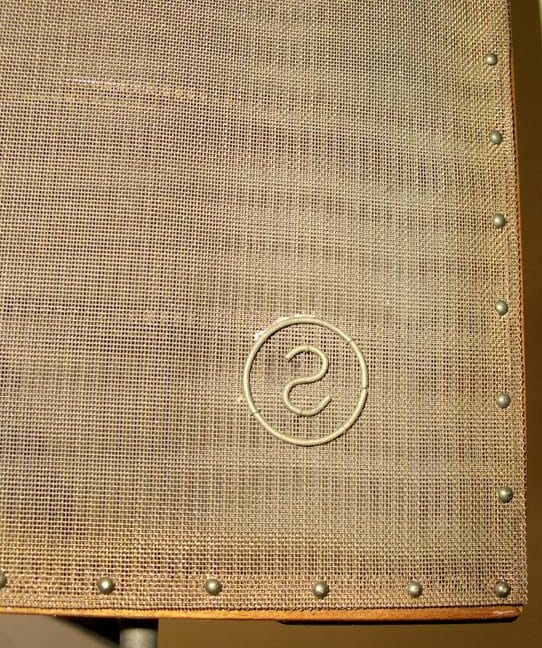
By Audubon’s time, the Whatman operation has left family hands and was split into two competing firms; one was managed by the Hollingsworths who maintained the rights to the watermark “J. Whatman/Turkey Mill”, while the second half of the company was owned by William Balston who owned the rights to the watermark “J. Whatman”. It was from these two paper manufacturers that Audubon and his printmaker Robert Havell sourced the paper for Birds of America.
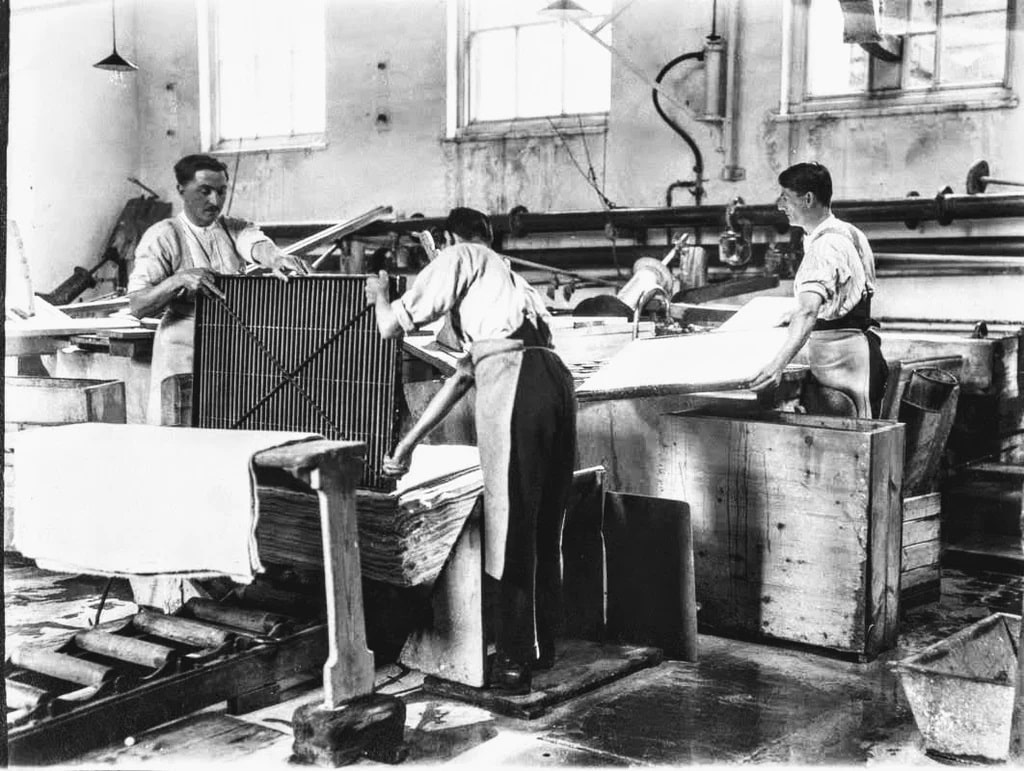
Making Double Elephant-sized paper by hand at the Whatman Turkey Mill.
Image sourced from Vintage Paper Co.
As one might expect, there are visual and material differences between the paper produced by the two Whatman firms. The paper watermarked “J Whatman (plus date, anywhere from 1827-1838)” has the watermark located several inches from the paper margin. In contrast, the “J Whatman/Turkey Mill (plus date, anywhere from 1827-1838)” paper has the watermark located closer to the edge of the paper. Likewise, the two paper types have different aging properties that result in the J Whatman/Turkey Mill paper aging into a cream color, while the J Whatman paper tends to retain its crisp white quality. All Audubon’s Havell edition prints bear one of these two watermarks unless they have been trimmed.
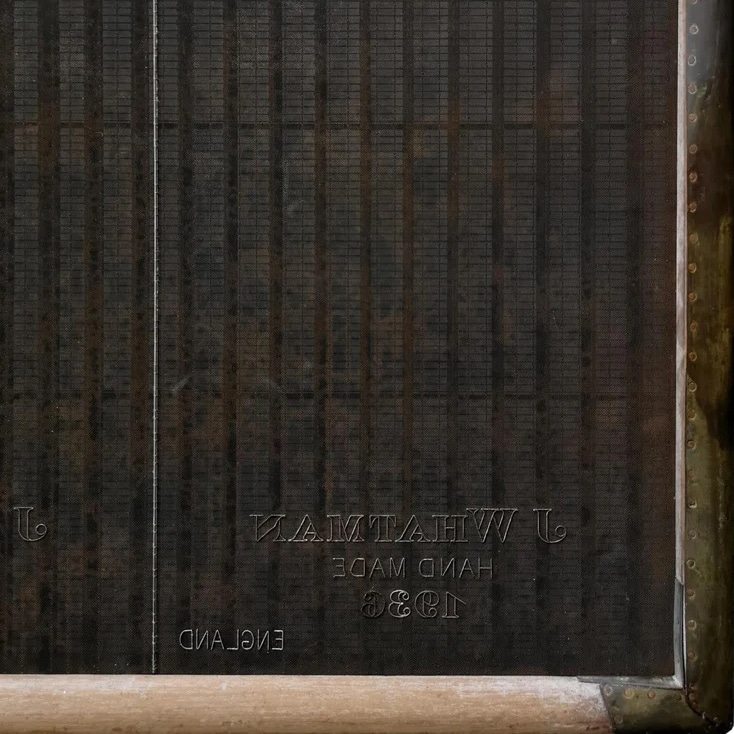
J Whatman Mesh with Watermark Mold
A watermark is produced during the paper-making process through the presence of wire letters or designs that are attached to the mesh mold. Once the paper pulp is poured into the mold, the raised wire letters displace the fiber making the watermarked part of the paper slightly thinner. Image sourced from Vintage Paper Co.
In order to decipher which of the two paper types an Audubon is printed on, one must shine a light through the sheet margin in order to reveal the watermark. A watermark is produced during the paper-making process through the presence of wire letters or designs that are attached to the mesh mold into which the rag pulp is poured. As a result, the pulp is displaced by the presence of the watermark design allowing the desired area to remain lighter than the otherwise continuous dense density of the overall sheet. This watermark or countermark can most easily be revealed through exposure to light.
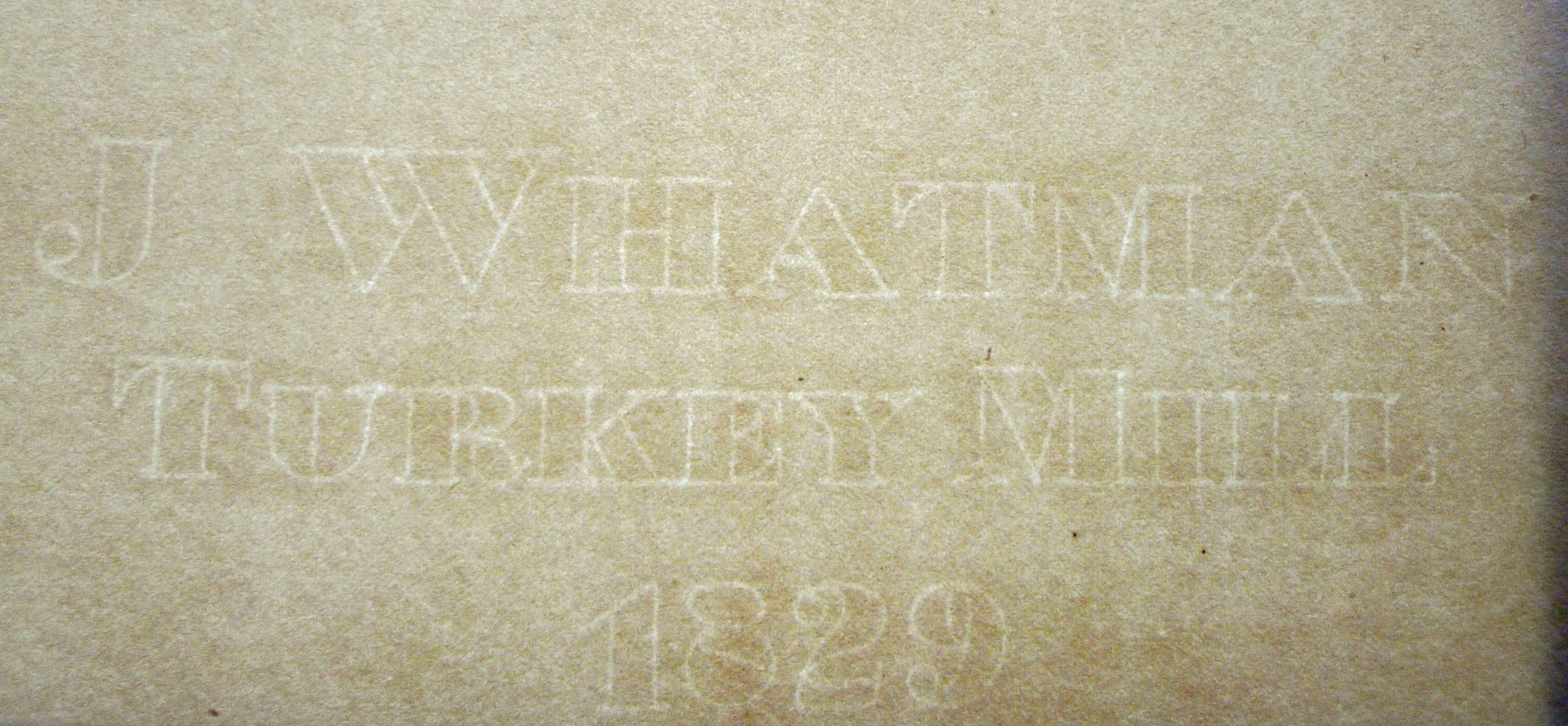
J Whatman Turkey Mill 1829 Watermark

J Whatman 1835 Watermark
Lastly, as previously mentioned, the J Whatman/Turkey Mill paper tends to gracefully age into a creamy ivory, while the J Whatman paper tends to retain its white quality. A quick glance at a selection of Audubon prints might reveal, by nature of relative contrast, the type of paper used for a particular print. Take for instance the below featured Carolina Parrot (left), which is printed on J Whatman/Turkey Mill paper, in contrast to the Black Warrior (right) which is printed on J Whatman paper. As one can observe, the toned paper of the Carolina Parrot is markedly richer than that of the Black Warrior.
![[HAV-0026-01]](https://www.audubonart.com/wp-content/uploads/2023/06/HAV-0026-01-Audubon-Havell-Ed.jpg)
![[HAV-0086-C2]](https://www.audubonart.com/wp-content/uploads/2023/06/HAV-0086-C2-Audubon-Havell-Ed.jpg)
It is significant to note that Audubon’s Bien edition of Birds of America, which was printed decades later by Julius Bien in New York, though double-elephant in size, is not printed on Whatman paper.

